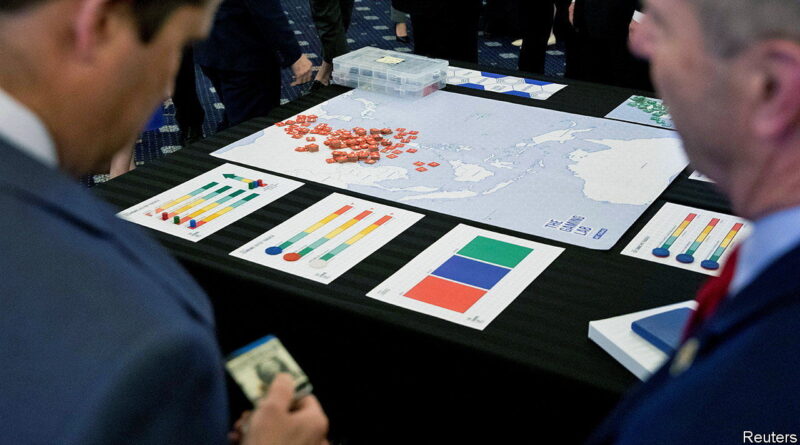Assessing Risks in a Taiwan Crisis
The possibility of a crisis involving Taiwan has raised concerns about the use of economic weapons and sanctions. A recent war game conducted by the China Select Committee in the US House of Representatives highlighted vulnerabilities in America’s position, including the need to strengthen military bases and the limited availability of precision munitions. However, the exercise also revealed an often-overlooked risk: the ineffective implementation of economic weapons.
During the simulation, the American Blue Team improvised sanctions on Chinese state-owned banks, exerting only moderate pressure on their adversary. This emphasized the importance of pre-planning sanctions rather than formulating them on the spot.
The topic of sanctions extends beyond the United States and is of global concern. To address the lack of specific details in discussions surrounding sanctions, Charlie Vest and Agatha Kratz collaborated with the Atlantic Council to offer a comprehensive report. They explore potential sanctions that could be imposed in a Taiwan crisis, short of military conflict, such as an island blockade. The report quantifies various scenarios, including sanctions on individuals, industries, and financial institutions. The most extensive measures resemble the punitive actions taken against Russia following its invasion of Ukraine. In this scenario, the G7 nations would collectively block transactions with China’s central bank and its four major state-owned commercial banks.
These measures would effectively freeze around 95% of China’s foreign exchange reserves, with the remaining funds primarily in gold. It would also sever China’s banks from a significant portion of their foreign assets, totaling $586 billion. The G7 nations would need to forfeit their modest holdings of yuan, while G7 banks would have to relinquish claims on Chinese banks, which amount to less than $126 billion or 1% of their total cross-border claims.
The big four Chinese banks handle a significant portion of transactions involving Chinese residents, including purchases of goods, services, and assets. Sanctions on these institutions could jeopardize approximately $127 billion in annual foreign direct investment, an additional $108 billion in portfolio investment, and $148 billion in repatriated profits from investments in China. However, the most substantial impact would be on trade in goods and services, as the report estimates that the big four banks settle around $2.6 trillion annually.
Nevertheless, it is important to note that such sanctions would not have an immediate crippling effect. China would likely implement strict capital outflow controls and allow the devaluation of the yuan. The report assumes that other banks would step in to fill the gap left by the big four, and the resumption of exports would generate the necessary dollars to stabilize China’s economy.
Alternatively, instead of indirect disruption through financial sanctions, the G7 nations could directly restrict trade by imposing export or import bans. The report explores sanctions targeting specific industries, such as aerospace, as well as broader measures affecting chemicals, metals, electronics, aviation, and transportation equipment. Such actions could potentially jeopardize 13 million Chinese jobs across these industries while also impacting 1.3 million jobs in G7 companies that supply them.
In summary, the use of broad financial sanctions is highly unlikely in any scenario short of war due to their disruptive nature. Even severe sanctions may have minimal impact in the event of armed conflict. Military engagement would hinder vital shipping lanes, disrupt Taiwan’s supply chain for high-end chips, and create panic. In effect, the military conflict itself would act as a sanction. Therefore, the economic weapons discovered by the G7 nations after Russia’s invasion of Ukraine not only have dual consequences but may also prove irrelevant in the only scenario where their feasibility arises.




